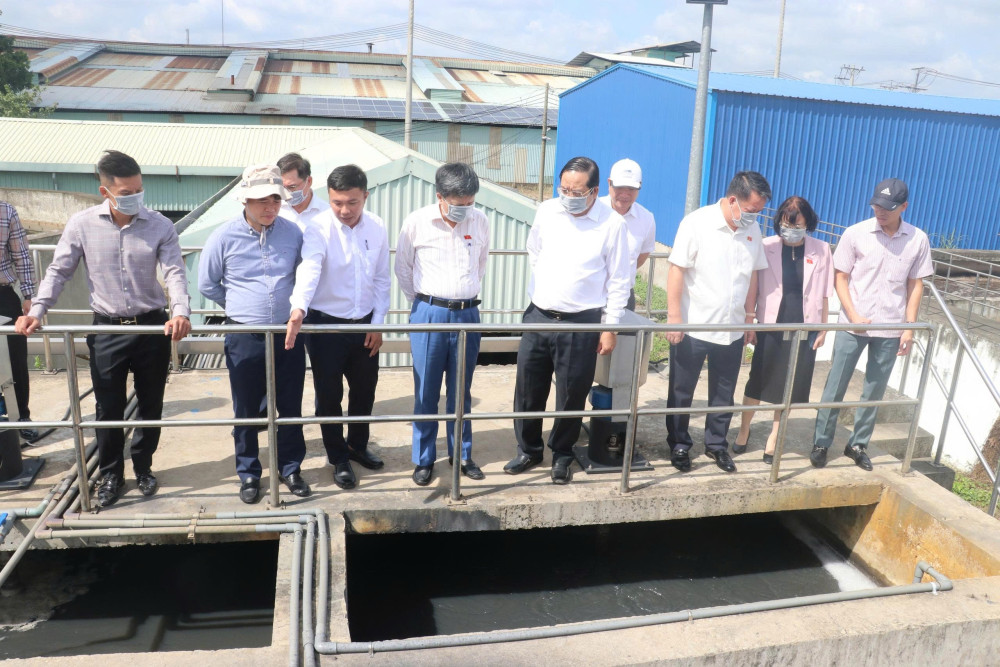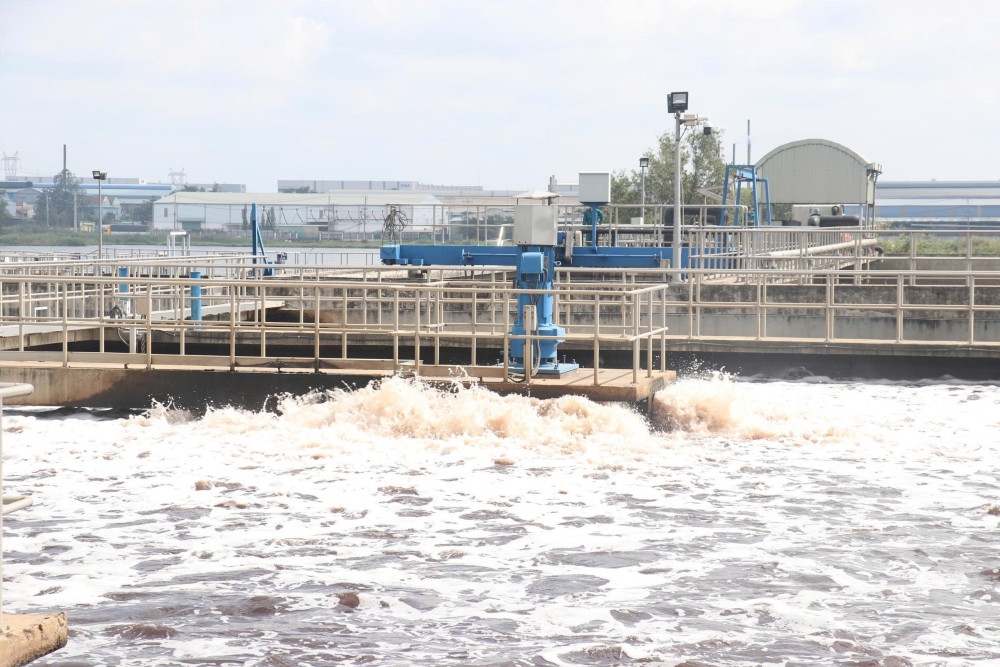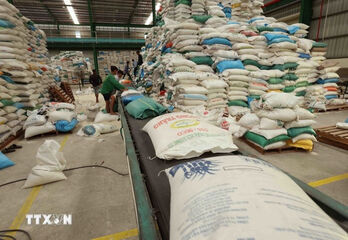
Authorities inspect environmental compliance at the enterprise
Innovating mindset, taking proactive action
Immediately after the Law on Environmental Protection 2020 came into effect (on January 1, 2022), Tay Ninh Province (before the merger, comprising the former Long An and Tay Ninh provinces) issued a series of legal documents and synchronously implemented directives to institutionalize the law’s new provisions. Step by step, legal regulations have been concretized into practical actions, yielding positive results across various sectors.
According to Mr. Nguyen Minh Lam, Vice Chairman of the Provincial People's Committee, air quality in the province has remained at a good level, while the water quality of the Vam Co Dong River has shown gradual improvement. The fact that 100% of the population now has access to clean and hygienic water reflects the effectiveness of investment in water supply infrastructure as well as strong management and oversight.
All industrial parks in the province are now equipped with centralized wastewater treatment systems that meet environmental standards. For example, recent inspections at Xuyen A IP confirmed the comprehensive development of technical infrastructure, including a separate drainage system for rainwater and wastewater, under the approved master plan. The investor has put into operation the centralized wastewater treatment plant (phases 1 and 2), consisting of three modules with a total capacity of 15,600 m³/day.
At Tan Do Industrial Park, the investor reported that an automatic wastewater monitoring station has been installed, with data directly connected to the Department of Agriculture and Environment. The production process is carried out in a manner that ensures air quality in the surrounding area is maintained.
As of now, 73.9% of industrial clusters have centralized wastewater treatment systems that meet environmental standards. The province has also recorded a forest coverage rate of 9.8%, a positive indicator of ecosystem protection.
Notably, no new sources of serious pollution were recorded during the 2022–2024 period. This reflects a significant shift in awareness and actions among local authorities, businesses, and the public.
In addition, indicators assessing environmental protection efforts have continued to show improvement. In 2023, the Provincial Environmental Performance Index (PEPI) of the former Tay Ninh stood at 57.48 points, ranking 26th nationwide, while the former Long An recorded 64.61 points, placing 8th. These results reflect positive progress in the state's environmental governance.
In addition, Mr. Nguyen Minh Lam noted that one of the most notable highlights is the shift in development mindset — no longer pursuing growth at all costs. The province has transitioned from passive treatment to proactive pollution prevention. Environmental protection in production and business activities is now subject to regular inspection and supervision, helping to minimize pollution risks from the outset.
Waste and scrap management has been carried out with a focus on reducing generation, promoting recycling, and building a circular economy model. Alongside this, the system of state environmental management agencies has been consolidated from the provincial to the communal level. Environmental officers have undergone formal training and capacity-building programs, enhancing their professional qualifications and law enforcement capabilities.
Existing problems that require resolution

Centralized wastewater treatment system at an industrial park located in Tay Ninh Province
Alongside many positive outcomes, the implementation of the 2020 Law on Environmental Protection in the province still faces several challenges. First and foremost, the system of guiding documents issued by central authorities remains inconsistent, creating obstacles for implementation at the local level. Urban wastewater treatment infrastructure is still limited, and the proportion of domestic wastewater that is properly treated remains low.
Another pressing issue is the unresolved problem of transboundary water pollution. In addition, a portion of the population and some businesses still lack sufficient awareness of environmental protection. This is evident in poor waste separation practices at source and littering in inappropriate places.
In addition, the implementation of Extended Producer Responsibility in the collection and recycling of post-consumer products still faces numerous obstacles. The collection and recycling systems remain inconsistent and lack synchrony, while the absence of incentive mechanisms has made implementation difficult.
Emissions control from vehicles and production facilities remains limited. Although penalties exist, they are not sufficiently deterrent. Circular economy models and renewable energy solutions have yet to be widely adopted due to the lack of financial incentives and concrete supporting policies.
Another issue lies in the development of the environmental database. The lack of historical data, standardized criteria, and an integrated data mechanism is hindering comprehensive monitoring and assessment of environmental quality.
Despite both notable strengths and existing limitations, the initial results after more than three years of implementing the 2020 Law on Environmental Protection represent a positive signal, reflecting a shift in awareness and actions regarding environmental protection. However, to ensure long-term effectiveness, the province must continue to review and address existing bottlenecks, improve policy and regulatory frameworks, strengthen inter-sectoral coordination, and promote the supervisory role of the people.
A green, clean, and sustainably developed Tay Ninh is not merely a goal for a single phase, but a long-term journey that requires the concerted efforts of the entire political system, the business community, and the people. The initial successes in implementing the Law on Environmental Protection provide a solid foundation for the province to continue advancing its economy, improving the quality of life, and safeguarding natural resources for future generations./.
By Le Duc – Translated by Tuong Vinh
Source: https://baolongan.vn/chuyen-bien-sau-thoi-gian-thuc-hien-luat-bao-ve-moi-truong-nam-2020-a200221.html
 Vietnam's exports maintain robust growth amid global challenges
Vietnam's exports maintain robust growth amid global challenges




